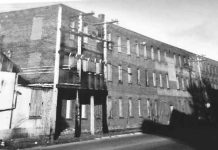Once upon a time Angelkeep had a pair of twin ash trees. Before Angelkeep even had been assigned a name, an excavated hole appeared that would one day be dubbed Angelpond. Chaney Brothers were politely asked to try to save several trees marked about five foot off the ground with fluorescent hot pink duct tape….


